Table of Contents
Introduction to Xinwld A97 Pro Wireless Earbuds
Xinwld A97 Pro Wireless earbuds are proving to be a much-needed accessory in today’s world, which is fast-paced and technology-driven. With the rise of connectivity and convenience, these slim earrings are a hands-free choice for those seeking stereo sound – and a break from traditional plugged-in headphones. Practicality The convenience and comfort of wireless earbuds make them a no-brainer for today’s listening hordes, and the sound quality now matches the needs of the contemporary listener.

In recent years, the world of audio technology has come a long way, transforming wireless earbuds from being a luxury must-have to a consumer favorite. They have been adopted by groups from commuters, runners, and gym lovers to casual listeners looking for a high-quality product that does not sacrifice them on the streets. This transition boosts the role of wireless earbuds as a utility device as well as a lifestyle accessory.
And while the price of wireless earbuds can fluctuate wildly, many top brands cost at least $159.99 for their high-end models. But as more budget alternatives make their way onto the market, consumers today have more affordable options that don’t skimp on quality. For instance, at a pocket-friendly price of $21.99, some models are wowing the audience and leaving them asking whether they REALLY have all that to bring to the table.
This blog post, therefore, seeks to further explore the specs, performance, and value proposition of these budget wireless earbuds. Let’s see if they’re worth it by a close look to find out if the low price comes away because there is something wrong with the product or if the cheaper devices can stand above the higher-range ones. As we move forward, we’ll look at user experience, performance measurements, and any interesting quirks that will matter to anyone trying to get a handle on the state of wireless audio today.
Design and Build Quality
The design and construction of wireless earbuds are incredibly important, as they directly affect the way you listen to sounds for long periods – plus, they can radically alter the way they look. The vast majority of models available are made of lightweight materials like plastic, making them suitable for long listening periods without causing discomfort. Though this decision is not cool and premium (like the metal or composite alternatives to be found at the high end), a lot of the cheaper models can feel surprisingly well put together for the money.
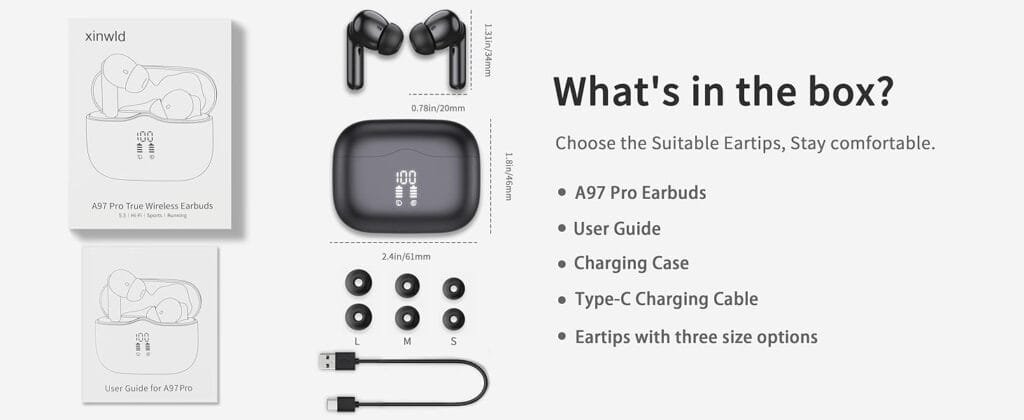
In terms of looks, today’s wireless earbuds are pretty snazzy and come in a bunch of colors, so you can express your style how you choose. Lots of manufacturers focus on ergonomics, so the earbuds have a nice fit in your ear. Some styles have interchangeable ear tips for a snug, secure fit and better sound quality, and others have adjustable sizing to keep you and your beats secured.
Weight is also an important consideration for the design of wireless earbuds. In general, the lighter the earbuds, the more comfortable they are for long-term wear. Brands are now leaning towards light and slim designs but still offering well-built systems. This is especially significant for individuals who wear them for sports like running or working out, where a snug fit that stays in place is critical.
When you stack up the build quality of a set of cheap wireless earbuds against something more premium, you definitely see a difference. Now, you still do, but the technology and materials have definitely leveled up the playing field in this department on the budget end of the spectrum. While more premium earbuds might include things like better active noise-cancellation or better audio drivers, you can find budget pairs that still sound good and hold up to regular wear and tear. So, when it comes down to it, cheap wireless earbuds are pretty good in terms of their design and construction when it comes down to it for the price!
Sound Quality and Performance
When it comes to wireless earbuds, the one thing that matters above all else is performance and sound quality to ensure that you’re getting a pleasing listening experience. Earbuds, in general, are meant for clarity to provide a well-balanced sound profile. The top models generally have solid frequency response, so users can hear clear highs, mids that aren’t tinny, and bass that goes thud. It’s this balance that’s key to an immersive sound experience, whether I’m listening to music or podcasts or chatting on the phone.
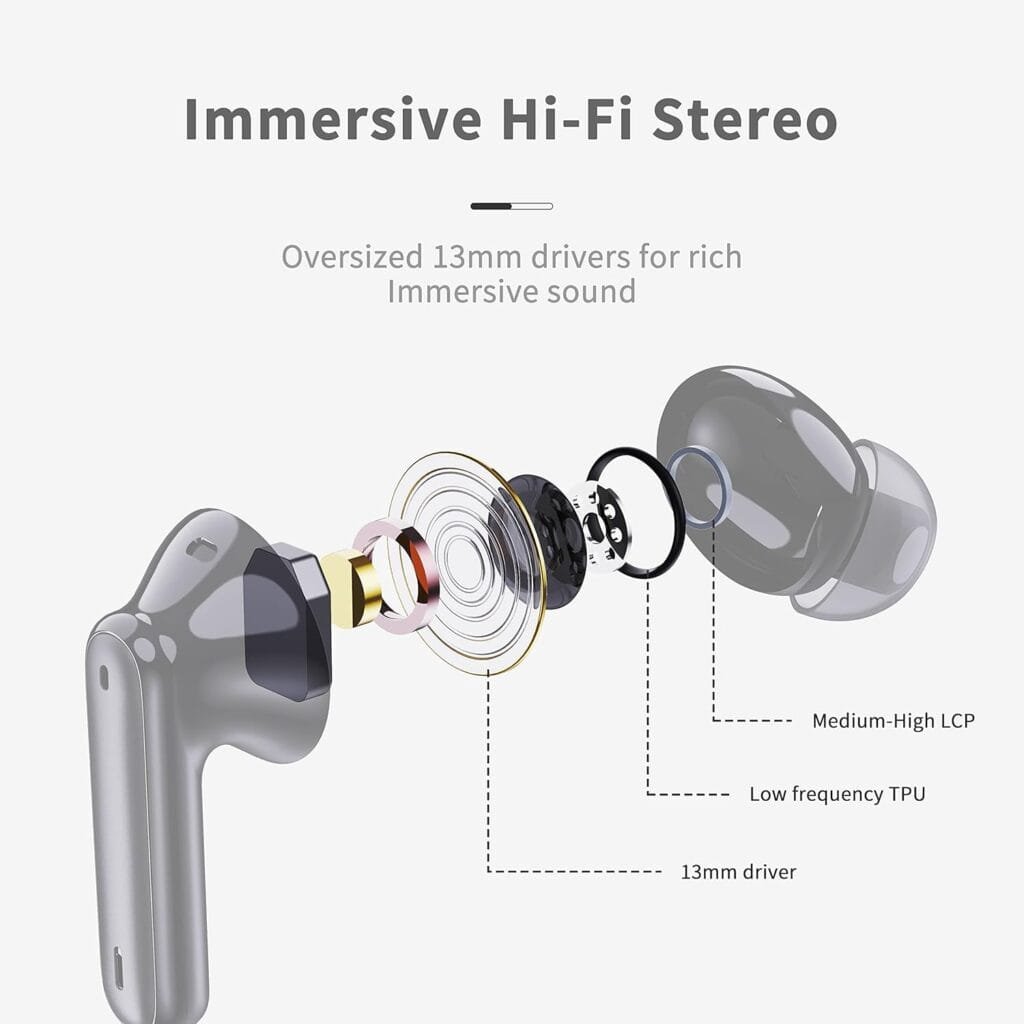
The vocals and instrumentals sound particularly crisp. For starters, many wireless earbuds, like the kind we are about to show you, use high-quality audio drivers that streamline sound quality for folks who are attuned to complex music details or simply want to listen to a compelling podcast. Some listeners say that when they’re just casually listening, a good pair of earbuds allows them to hear a lot of the background details behind the music in ways that they enjoy hearing.
Another important consideration is the bass response of the sound. Many earbuds are tuned to emphasize low-frequency sounds without washing out the mid and high frequencies. This provides exceptional depth in certain genres, such as Hip-Hop or Electronic Dance Music, while maintaining clarity throughout. Some models even allow you to customize the sound or audio profile, and they can be adjusted to your liking, “if you are a bass fan, that extra punch is there!
The levels of loudness are very significant in the experience, too. A good pair of true wireless earbuds should be able to deliver high volumes that are loud enough for most environments, whether you’re commuting, working out, or working in a moderately noisy environment. However, it is crucial for players in this space to make sure they don’t sacrifice sound quality for volume level, as distortion can be an unwanted distraction while listening.
In sum, wireless earbuds’ sound quality and performance are what user-focused audiophiles who are looking for the best budget-friendly audio experience are looking for. The better the earbuds sound overall in terms of clarity/bass response/volume, the more versatile you can use them for different listenings.
Noise Cancellation Feature
The demand for noise cancellation in wireless earbuds has definitely developed into a deciding factor when consumers shop for audio devices. ANC active noise reduction technology aims to reduce the relative magnitude between the ambient sound and the listening sound. This is especially useful for commuters, in a home office, or anywhere where concentration is desired. Volatile organic compound adsorption rates can vary widely between ANC models, so it’s worth checking each design’s adsorptive capacity when shopping for a product.
When evaluating how well wireless earbuds are able to silence noise, it is important to factor in if they can effectively deal with the different kinds of noise. Good models tend to be effective at stopping lower-frequency noises, like the drone of an air conditioner or engine sound on a train. They are earbuds that have microphones that pick up on outside noise and then produce sound waves to cancel out the noise — creating an even more intuitive listening experience. On the other hand, mid-range or more budget options might have a hard time when it comes to higher frequency noises, such as conversations or sudden sounds, and therefore might not provide the best experience.
Although ANC has good advantages to offer, the users should also be warned that it is not without limitations. There are a few occasions when the technology might not work for some wireless earbuds — they’re not the best for concerts or construction sites, for instance where the tech wouldn’t be quite as effective. Also, extended usage of noise-canceling can lead to a sensation of pressure in the ears (also known as “ear fatigue”). Users are also recommended to take breaks while listening for prolonged periods to avoid discomfort. All in all, I would say that consumers are to weigh their use case and environment to choose an earbud with the best performance noise cancellation for their lifestyle.
Battery Life and Charging
The battery life of wireless earbuds is an important factor that affects their user experience imprint. Many of today’s wireless earbuds boast generous listening times on a single charge, between about 4 and 10 hours, depending on the model and the way you use them. Users can get plenty of listening time, with excellent playback for daily commutes, workouts, or long sessions of music enjoyment. What’s more, standby times are often in the days, providing earbuds that continue to work without the need to recharge daily.
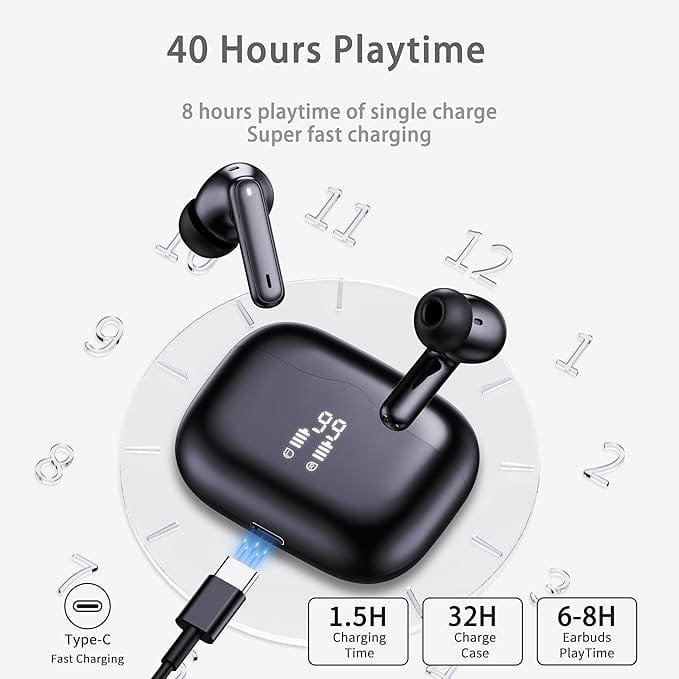
In terms of charging options, most wireless earbuds still provide both wireless as well as wired charging options. Wired charging is typically faster, so you can easily navigate around quick charges using USB-C or Micro USB connections. This is a great, quick method that is perfect for when you are in a hurry and need an extra lift before heading out. On the flip side, wireless charging is gaining currency for the ease of use it brings; with the earbuds placed inside a compatible charging case or pad, users get rid of the need for plugging in wires.
A lot of earbuds today come with fast charging, as the technology that it has provides hours of playback with just a small amount of charging, typically under half an hour. This is very convenient for users with an active lifestyle and for those who require a fast and effective method of preparing gel nails. Some of them also have charging cases, which in some cases offer several extra charges before needing a charge themselves, and they make the experience as a whole much better because you can use the headphones a lot longer without having to remember to charge them every few days.
At the end of the day, wireless earbuds are only as good as the battery life and charging convenience that comes with them. So, with this in mind, consumers can educate themselves and then look for a listening product that complements their lifestyle and listening choices.
Connectivity and Compatibility
The popularity of wireless earbuds has changed the way we connect and interact with our devices, and that’s why connectivity and compatibility are two important things to consider when selecting an earbud. For wireless earbuds, the most common way to connect to a device is using Bluetooth. The vast majority of current wireless earbuds use Bluetooth 5.0 or higher, which is more stable and has longer interconnection distances than previous services. When it comes to pairing, this makes for a consistent experience with different devices – be it a smartphone, tablet, laptop, or smartwatch.
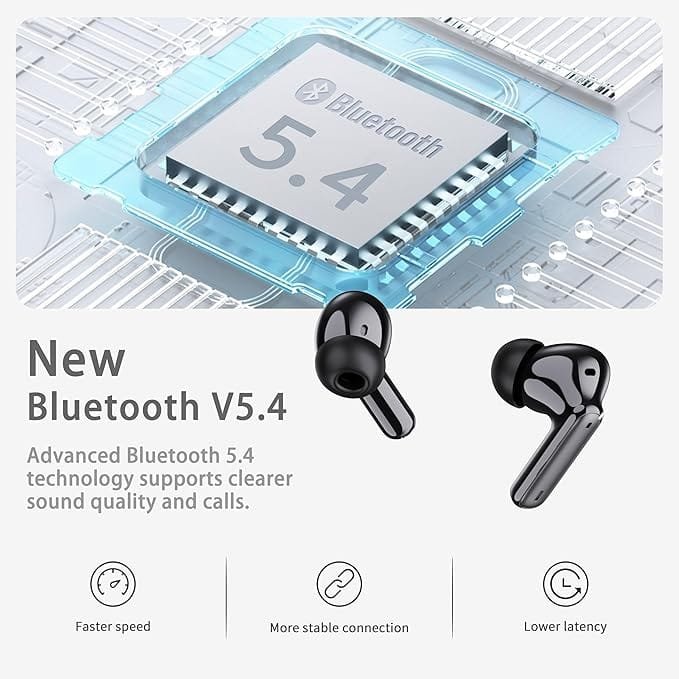
How easily earbuds can be paired to a device is very important to the satisfaction of the user. Many newer models have included auto-pairing options and made the pairing sequence as easy as clicking and opening the earbuds. This implies that after the earbuds have been paired with your device, they will sync with them automatically when opened from their case, making things a lot easier for most people. There are also some wireless earbuds with multi-connectivity, where users are able to connect to more than one device at a time — no need to manually disconnect between gadgets.
The stability of the Bluetooth connection is also significant. As far as coverage goes, wireless earbuds work with a pretty wide range of up to around 30 feet away from your device, give or take, based on your surroundings. Walls and interference from other electronic devices could bring the range down, however. A pullout feature is the compatibility of the pods with various operating systems; a number of the wireless earbuds are constructed to function with the two iOS and Android systems, which provides you freedom of use no matter which one you are using.
At the end of the day, how wireless earbuds pair and connect to devices and how universal they are become important factors that help to make or break their convenience, reliability, and portability.
Waterproof Rating and Durability
Headphones, in general, are no longer a one-size-fits-all solution, and with that, wireless earbuds have also been graduating to become a staple in the audio market. How they can handle various environmental conditions is also part of what makes them work. One aspect of this, obviously, is the waterproof rating, which can be indicated by an IP (Ingress Protection) rating. This is a necessary feature for people who want to use their earbuds while working out or outside, where they are at risk of being drenched in sweat or rain or having accidental liquids splash onto them. Earbuds that are IPX4-rated, for example, will ward off water splashes from any angle, so they’re perfect for light exercises like jogging or biking. Higher ratings (like IPX7) mean the earbuds can be dunked in water to one meter (about 3 feet) for a duration of about 30 minutes, providing reassurance for intense workouts or even an unforeseen rainshower.
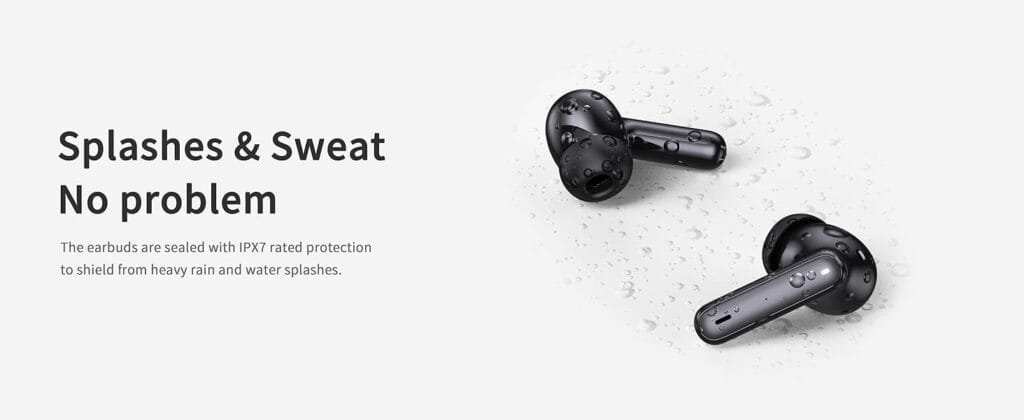
It’s essential that users pay attention to the best IP rating for their lifestyle. Those users who regularly run or take part in outdoor sports will want to consider models with higher waterproof ratings, ensuring earbuds can withstand sweat and moisture while continuing to deliver quality audio without damaging the internal components. Also, today, a lot of brands even market durability, for example, tough housing parts, drops, and such. This durability makes for a long-lasting earbud that can take the abuse. Some of the best value for consumers are products that feature a stick shell with good waterproofing; this kind of true wireless is expected to bring a more stable performance in a variety of environments.
Also, battery life and sound quality are critical, and those aren’t really even waterproof features, but they should not be overlooked as they are very much part of the user experience. For an active lifestyle, a bit of durability and audio quality is the way to go in premium true wireless earbuds. Selecting the perfect pair is about more than looks – it’s about having an overall grasp on how waterproof ratings and durable construction will complement the activities that an individual does each day.
Comfort and Fit
Comfort and fit are critical factors in favor of wireless earbuds, particularly if they will be worn for long periods at a time. Fortunately, many brands know this and ship multiple sets of ear tips, perhaps in varying sizes or materials and with a variety of tips for different users. Some manufacturers even sell extra-small sizes. Foam and silicone ear tips are also provided in the package to accommodate personal preferences (foam tips offer a more snug, noise-isolating fit, whereas silicone tips tend to be more breathable and easier to clean), so you can customize to your liking.

The ability to conform to various ear types is also an essential criterion for overall wireless earbud comfort. Several also have an anatomic profile that fits the ear well, and they tend to not be bothersome when worn for long periods. This design feature will be appreciated by users who listen to music and podcasts or take calls for hours on end, as it prevents this issue by reducing pressure points. It is better to seek earbuds that are light in weight because heavy ones can put pressure on your ears and may affect your fun for the music.
2, 3 Moreover, the fasteners on the market are not able to offer considerable stability of wireless earbuds for exercising and other activities that need to twist the head. Numerous high-quality models are outfitted with secure-fit technology, which means the earbuds are locked into your ear while you walk, run, or work out. This won’t just please the ears but also give peace of mind to the wearer that they aren’t about to fling the earbuds out of their ears whether they are working out, shooting hoops, or chasing down kids.
By looking at ear tip options and how well wireless earbuds stay stable in your ear, you can get a sense of whether they will be comfortable and stay in place during activities. This level of attention to detail can vastly improve the overall experience that users enjoy when listening to audio.
Value for Money of the Feature
The use of wireless earbuds has the advantage of avoiding getting caught up in those pesky cables! Let’s be honest; when it comes to budget-friendly items, it’s all about getting something that is affordable and does not really affect the pocket. For the price of $21.99, those wireless earbuds are really a bargain in that regard. High-end brands are not the only ones that can sell to this emphasis, as even cheaper models target the most common needs of the average user.


When all is said and done, the pros overshadow the cons, especially when it comes to portability and affordability. Built with the purpose of functioning on the go, they have good qualities like comfort to wear, Good battery life, easy-to-connect Bluetooth, etc. For those who mostly use earbuds for casual listening, calling, or working out, the offered performance in this price range certainly looks appealing. The sound quality, however, might not be able to shelter the audiophiles looking for high-quality sound output as it may not be up to their higher standards.
Plus, these buds are targeting a specific customer base: those everyday folks who want solid audio but for a bit less. If you are a light exerciser, commuter, or someone who just likes to listen to music while you have your morning coffee, you probably will find them useful. Scob1P..Commonly, professional users, including me, who are musicians or sound engineers, will be attracted to better solutions that do not require h this but more investment.
All in all, the $21.99 wireless earbuds make a great deal if you are looking for economical audio gear. As much as they may or may not satisfy the needs of audiophiles, the WS01 is highly practical and accessible for use by everyone. The short of it is that these earbuds prove quality does not necessarily come with a hefty price tag and should be a sensible purchase if you want better-sounding audio for less.
Conclusion
Wireless earbuds have become an essential accessory for today’s consumer, delivering a combination of easy-to-use portability, seamless connectivity, and sweet sounds. Summary The Xinwld A97 Pro Wireless Earbuds are a budget-friendly option in a world full of premium models but offer a good argument for those looking for a reasonable pair of earbuds that simply work just as well.
During the course of this review, we looked at key factors, including design, sound quality, noise cancellation, battery life, connectivity, durability, and overall comfort. The A97 Pro may not be able to go toe-to-toe with the big boys in every category, but it has some decent features for less than a back-breaking price. With its low weight, dependable Bluetooth, and decent sound, it’s a good enough pair for casual listeners, someone on the go, or even gym-goers.
Buyers do, however, have to be realistic; it is a cheap website. While the A97 Pro does a good job sonically and ergonomically, it likely doesn’t have the level of features or high-end construction you might find on more expensive models out there. Noise cancellation works but isn’t as effective as what we’ve seen from the best in the industry, while ruggedness may not weather extreme conditions over long periods. But for anyone shopping inside a thin budget who craves performance, these trade-offs are fair.
Conclusion – Price is typically an indicator of quality. However, that is not the case with Xinwld A97 Pro Wireless Earbuds, as they offer much more than what it costs. Whether you need a secondary pair of earbuds for your morning bike ride or your morning commute or are just looking for the right quality/main bang for your buck, these earbuds make a good case for themselves in today’s overcrowded wireless music market.
FAQ to Xinwld A97 Pro Wireless Earbuds
1. Are the Xinwld A97 Pro Wireless Earbuds universal and fit all devices?
Yes, they are compatible with most Bluetooth-enabled devices, including smartphones, tablets, and laptops.
2. What is the battery life at full charge?
The earphones give 5-6 hours of playtime per charge and an extra 18 hours with the charging case.
3. Do the earbuds support active noise cancellation (ANC)?
While they can block some sound, they don’t have the most advanced noise canceling (ANC).
4. Are the earbuds water-resistant?
Yes, it has an IPX4 rating, which means it resists sweat and light spills, but it’s not intended for full immersion in water.
5. Can I use a single earbud?
Yes, the earbuds are compatible with mono mode; you can use the left or right earbuds separately.



